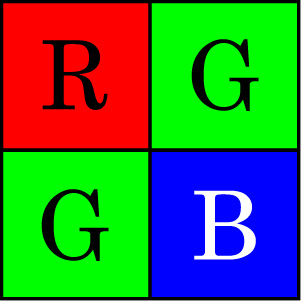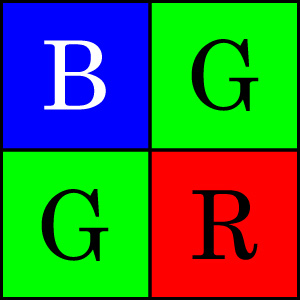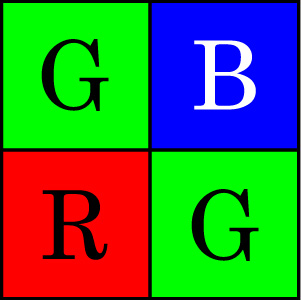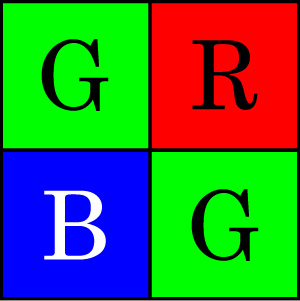Bayer refers to the color filter array placed on the image sensor in industrial cameras.
In a single-plate camera, the image sensor can only detect brightness (black and white or monochrome), so red, green, and blue color filters are placed on top of each pixel to obtain color information.
These color filters consist of R, G, and B filters arranged in a 2×2 matrix.
Specifically, the arrangement is as follows.
|
Bayer RGGB |
Bayer BGGR |
|
 |
 |
|
|
Bayer GBRG |
Bayer GRBG |
|
 |
 |
These four patterns are called “Bayer patterns” or “Bayer arrays”.
The camera uses one of these patterns, and the color filter covers the entire image sensor in a repetition of this pattern.
The fact that green is among the two patterns takes into account that the human eye is more sensitive to green than red or blue.
Image data obtained through the color filter of the Bayer pattern is called “RAW data” and does not produce a correct color image even if it is displayed as it is.
Eventually, it is properly processed and converted to a color image, such as the RGB image format.



